Connect anything. Change everything
MuleSoft Anypoint Platform – the only integration platform on the market that can map the API lifecycle holistically out-of-the-box.
In order to achieve the goals of digital transformation, agile and scalable solutions must be implemented without losing transparency and control over the interfaces used. With its holistic integration approach (design, validate, build, test, deploy, manage, operate), MuleSoft is the only provider on the market with the methods and organizational models to develop modern corporate IT into a true business enabler.
Mule ESB, Cloud Hub iPaaS, API Manager and over 120 ready-made Plug & Play connectors are the building blocks of the only unified integration platform that allows companies to implement integrations in a hybrid environment, connecting both SaaS applications and on-premises seamlessly.


CoE, C4E & Governance
Novetee understands your need to build a centralised knowledge and capability base, as the traditional Centre of Excellence, and also create a decentralised subset empowering smaller teams to leverage this CoE, disseminate knowledge and deliver excellence through this Centre for Enablement. We believe that IT, though an integral part of your digital transformation, should take on the role of an enabler, ensuring less dependency, providing unlimited access to digital assets and enable business teams to deliver autonomously. Novetee can help you build your CoE, C4E or governance methodologies through a fully managed service or as an advisory partner.
Anypoint Platform and Mule ESB
MuleSoft Anypoint Platform is the innovative platform for Digital Transformation that allows your company to easily integrate all IT systems (SOA, legacy, custom, SaaS and APIs) and develop new Business Applications up to 5x times faster and Increase productivity by 300%. Anypoint Platform is a
powerful and unified platform for APIs and Integrations equipped with:
- Anypoint Design Center to design and build APIs
- Anypoint Exchange, to share APIs, templates, and assets
- Anypoint Management Center, a centralized web interface to analyze, manage, and monitor APIs and integrations
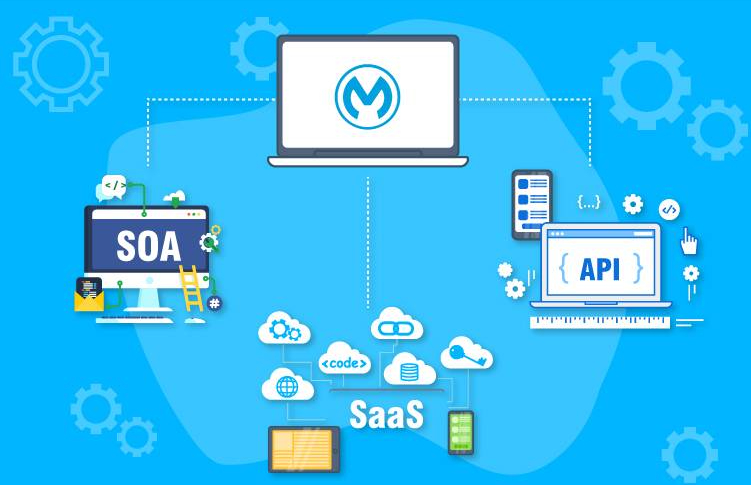
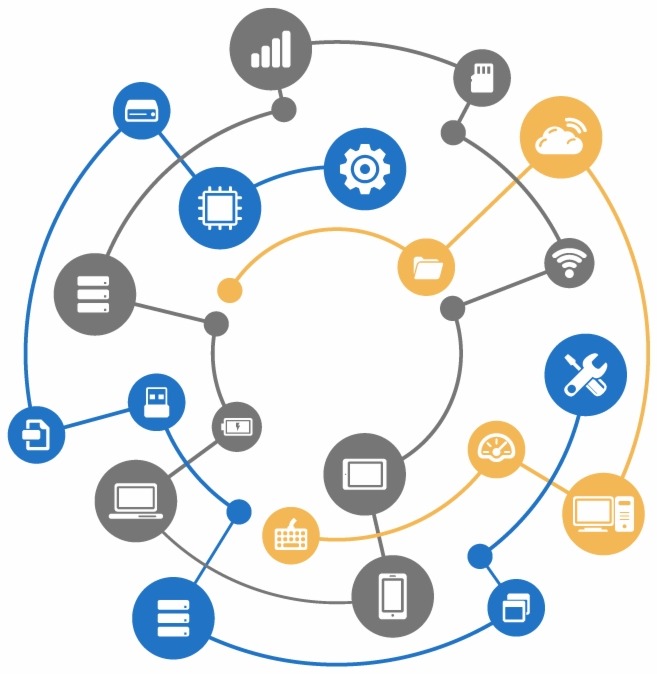
Traditional Integration Pattern
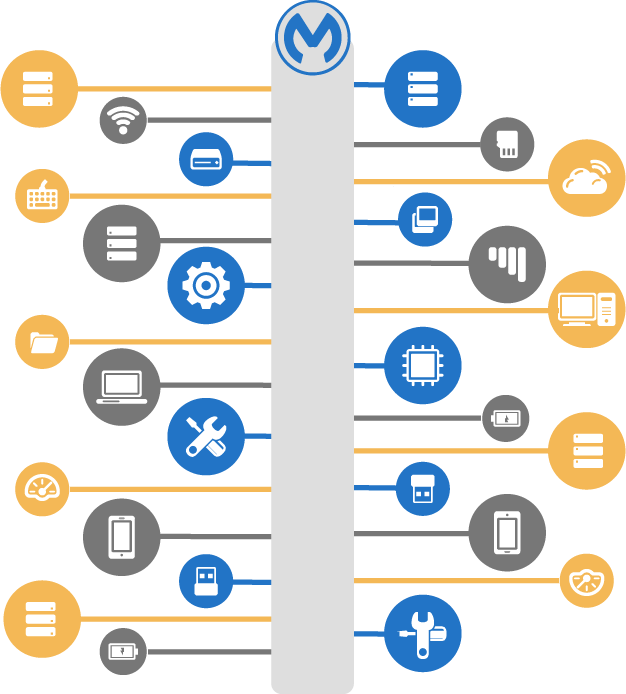
Mule ESB Integration Pattern
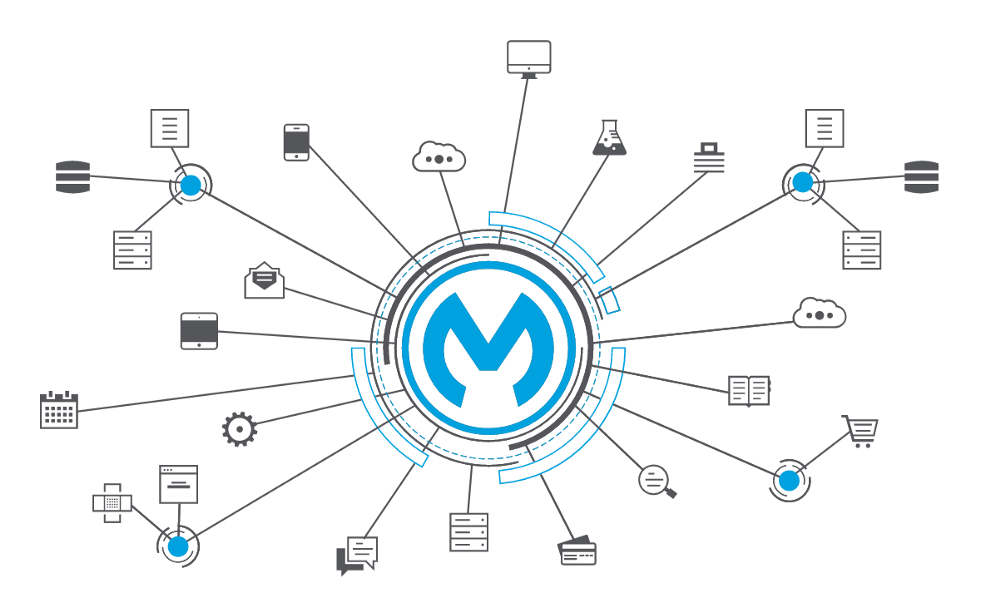
Why Use Mule ESB?
In the past, enterprises developed point to point integrations between different applications — an incredibly complicated and costly process from implementation to ongoing management and upkeep. Now with the advent of Service Oriented Architecture and Mule ESB, dozens of integrations can be developed rapidly and with ease. Generally speaking, here are the key benefits of leveraging Mule ESB:
- Ease of development
- Scalability to process data
- ability to connect with dozens of different technologies out of the box (robust)
- grows with your needs from standard to complex
API-led connectivity
API-led connectivity is a methodical way to connect data to applications through reusable and purposeful APIs. These APIs are developed to play a specific role – unlocking data from systems, composing data into processes, or delivering an experience.When the entire organization adopts what is known as API-led connectivity, everyone in the business is empowered to access their best capabilities in delivering applications and projects through discovery, self-service, and reuse.
API-led connectivity not only depends on three categories of reusable APIs to compose new services and capabilities, but also decentralizes and democratizes access to enterprise data. Central IT produces reusable assets, and in the process unlocks key systems, including legacy applications, data sources, and SaaS apps. Central IT and other teams can then reuse these API assets and compose process level information. Then, app developers can discover and self-serve on all of these reusable assets, creating the experience layer of APIs and ultimately the end-applications. This API-led approach to integration increases agility, speed, and productivity.
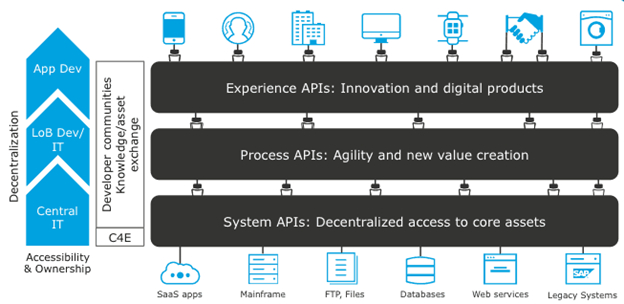
API MANAGEMENT
To be successful, organizations must anchor the “API first” paradigm and a methodical approach to managing the APIs. API management is therefore the key to enable organizations to achieve the required agility and speed in terms of connectivity, i.e. digital networking. In concrete terms, API management means that APIs are not viewed as »third-class citizens«, but as a leading religion.
With our API management methodology, you ensure the technology-based exchange of data with digital ecosystems and customers as a competitive advantage.
